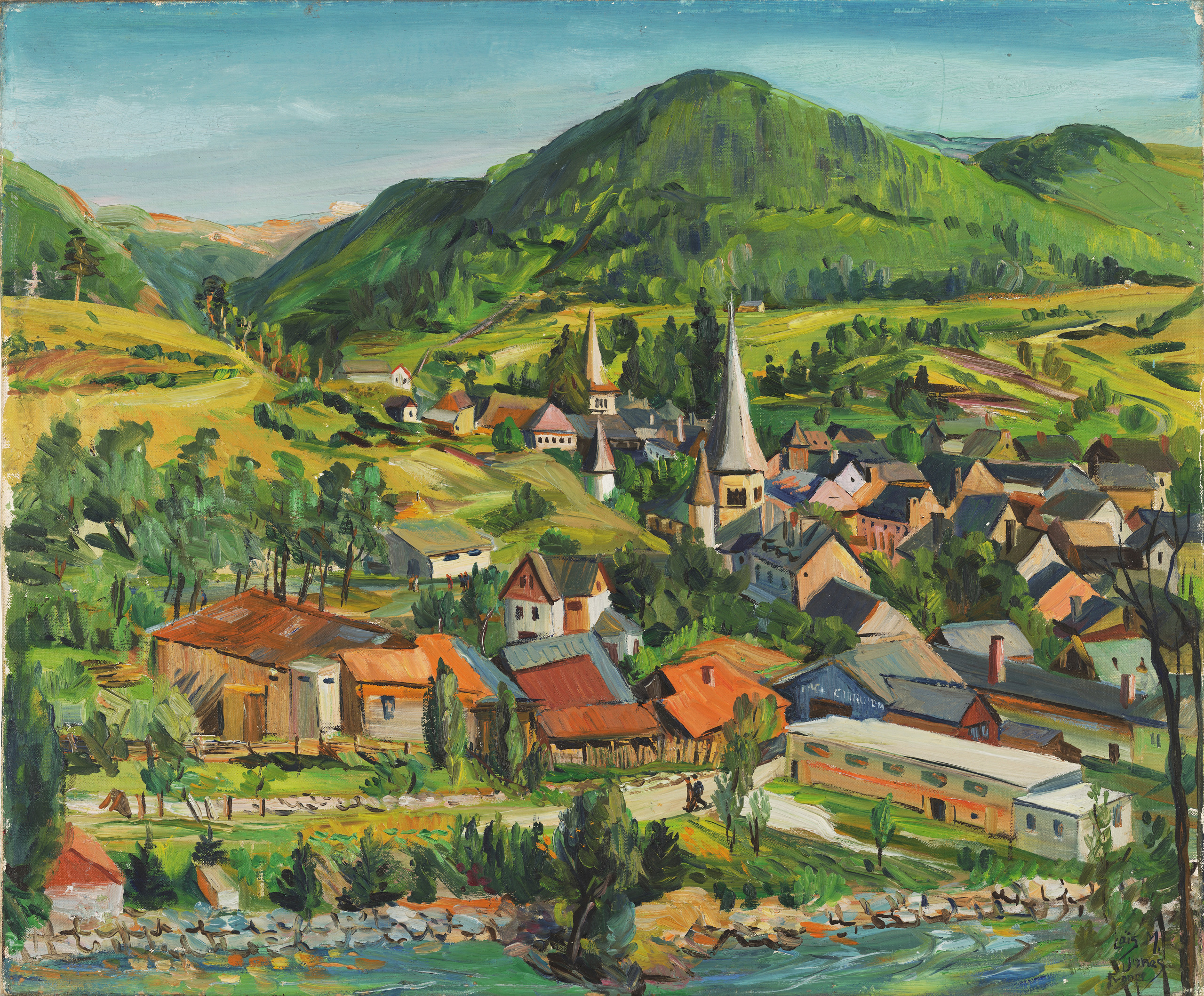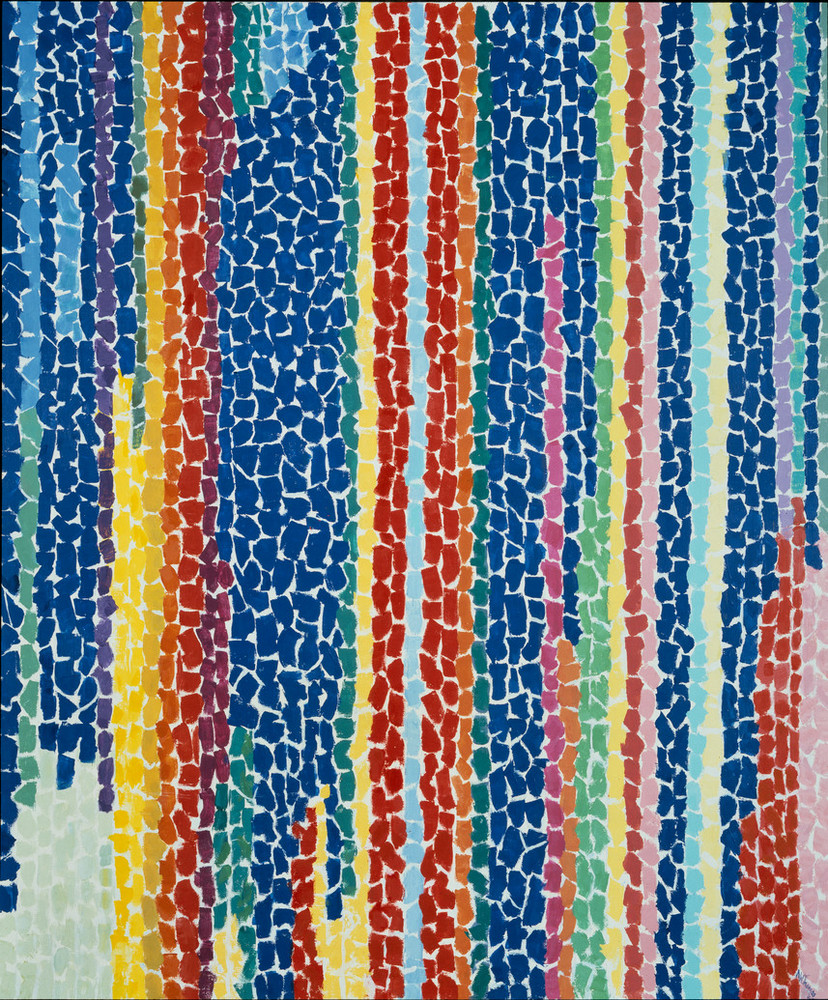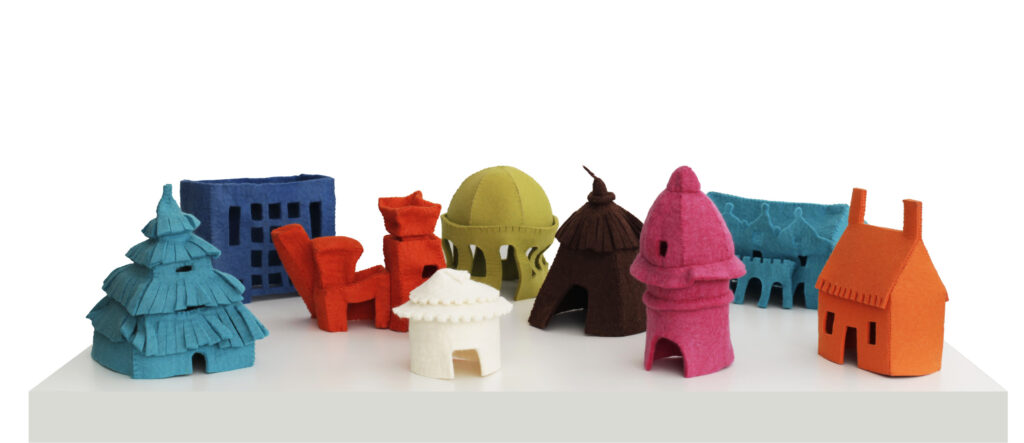In this series, museum volunteers share brief insights into their favorite NMWA collection works. Hear from docent Jayne Beline about her favorite paintings, sculptures, and photographs that all connect to the idea of “home.”
1. Arreau, Hautes-Pyrénées (1949)
Every time I look at this colorful painting by Loïs Mailou Jones (1905–1998), I find myself smiling while focusing on a different part of the beautiful French landscape. As an African American artist, Mailou Jones felt at home in France, specifically Paris, where she was treated with respect and her art was appreciated.

2. Figure (Merryn) (1962)
Merryn, located in Cornwall, England, is a place that Barbara Hepworth (1903–1975) called home. I appreciate that this alabaster sculpture recalls the rolling landscape of this area, and I can envision a human form frolicking through the countryside. Hepworth, who wanted to be a sculptor from the time she was a young child, used direct carving to create this sinuous work.
3. Iris, Tulips, Jonquils, and Crocuses (1969)
Alma Woodsey Thomas (1891–1978) is one of my favorite artists. Her home was located on 15th street here in Washington, D.C. When I look at this painting, I see the flowers almost dancing and blowing in the wind. I imagine that Thomas gazed out her window and into her garden for inspiration.

4. Plaid Houses (Maquettes) (2005–11)
The word “plaid” in this work’s title is a reference to the 15th century Scottish Gaelic word for blanket (plaide). Laure Tixier (b. 1972) uses felt and other natural materials to highlight ideas of habitat, architecture, and city planning. Her maquettes depict homes from around the world, and they bring back my childhood memories of little miniature houses positioned under our Christmas tree.

5. Untitled (Fort) (2006)
When you were a child, did you ever create a home of your own by building a blanket fort? In this photograph by Angela Strassheim (b. 1969), the bright purples and pinks that surround this blanket fort provide a contrast to the girl’s facial expression. By meticulously staging this photograph, Strassheim invites the viewer to decipher what is happening in this picture.

